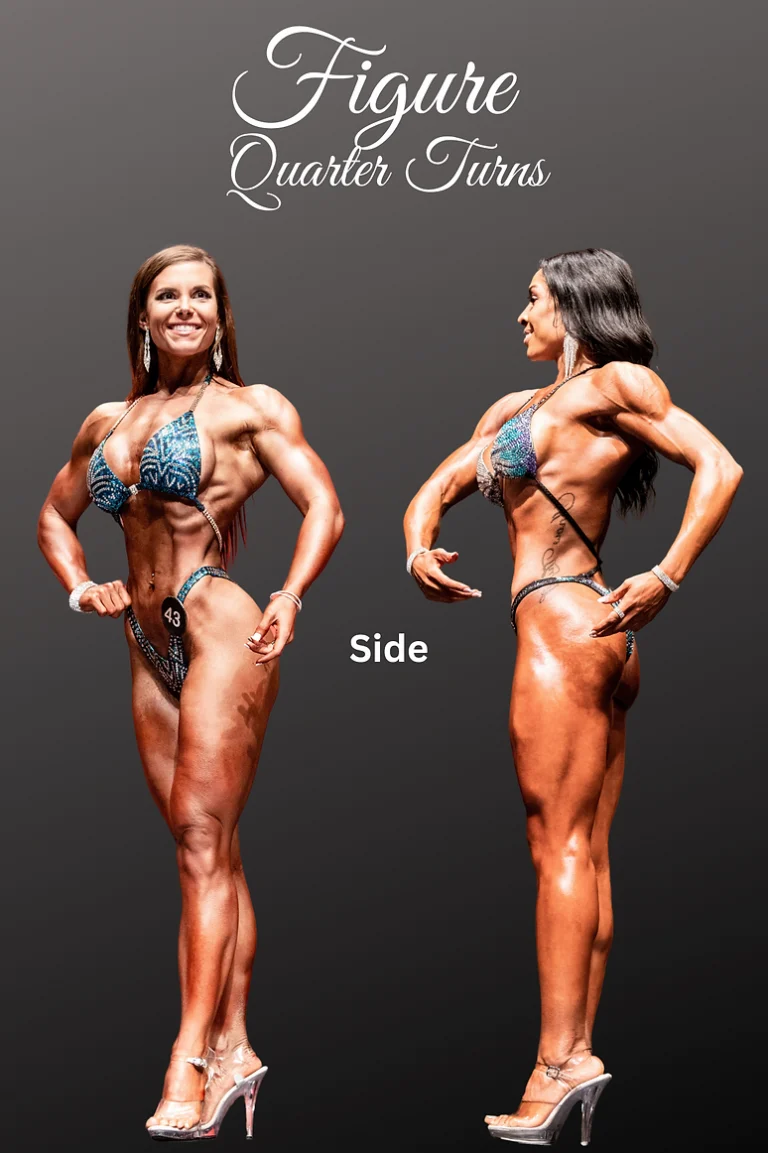
NANBF Figure Guidelines
Overview
- Competitors compete in a two-piece suit. NO Thongs or Thong-like suites are permitted. Competitors can compete in an off-the-rack suit. All suits must be in good taste. Athletes concerned with the cut of their suit not being up to standard will submit pictures by contacting info@nanbf.net to ensure it is not an improper suit. If suit fronts or bottoms are too low or small and the judges deem them to not be up to standard, the competitors will be scored down.
- Competitors must wear high heels.
- Competitors may wear jewelry
- Each competitor must be a member of the NANBF.
- Bikini divisions are height based and split according to competitor numbers.
- Bikini competitors are permitted to crossover to Figure, Women’s Physique or Women’s Bodybuilding.
- Competitors must be 13 years of age or older. Competitors under 18 must have parental consent.
- The use of performance-enhancing substances is never permitted. All competitors must successfully pass a polygraph screen prior to competition.

Judging Criteria
Competitors will be judged in a group.
Based on full, shapely muscularity, balance, proportion and conditioning.
Symmetry in both muscularity and conditioning. No body part overpowers another. Upper and lower body conditioning equal overall.
Figure competitors should not be over-conditioned displaying graininess as seen in Bodybuilding.
Stage presence should display gracefulness and confidence.
Hair, make-up, tan, suit and accessories should compliment the competitors physique.
The head judge will direct competitors to line up front center of the stage to be ready for group comparisons.
The head judge will guide competitors through quarter turns as a group, to display their physique from front, side and back to determine the most balanced physique.
Quarter Turns
- Front and Back: Both feet together, and arms down by sides.
- Side: Upper body can be twisted towards judges to accentuate V-taper. Arms down by side OR back hand on back hip. Hips face side of the stage.
- Both feet flat.


The individual presentation portion is a stage walk. This portion of the show is for the crowd and gives the competitor a chance to win a “Best Presentation” award. Competitors walk out to house music of promoter’s choice and perform a T-walk or L-walk.
T-walk: Consists of walking out from rear center stage, do a single pose, then walk to front center stage turn and walk to stage left and do a pose, then walk to stage right do a pose, then walk to the front center of the stage doing the final pose then exit the stage.
L-walk: walk from center stage to either right or left stage. Do the same amount of poses in three spots in a straight line, then leave the stage.
Venues vary in accessibility so competitors should reach out to perspective promoters about model/stage walk specifics so that you can prepare properly.
Individual presentations should be done tastefully and be conducive to a family atmosphere. Bodybuilding-type poses, fitness moves (like push-ups) and costumes/props should be avoided.
Remember, you are not alone on stage. Good sportsmanship is important. It makes competitions more enjoyable for everyone. While winning might feel like the most important thing during competitions, good sportsmanship teaches competitors how to be gracious and respectful towards others. If you’re disappointed with a placement, show good sportsmanship. Consider asking the judges for feedback after the show. Everyone worked hard. Don’t allow poor sportsmanship to ruin the event for others. Sportsmanship also applies to an audience, including viewers and coaches. Competitors or coaches who exhibit what WNBF/NANBF deems as poor sportsmanship at the event or on social media are subject to disqualification and may be banned from future WNBF/NANBF events…
- Coaches are to refrain from using threatening or foul language while at WNBF/NANBF events.
- Coaches are not permitted to sit in the row of seats located directly behind the judging table.
- Coaches cannot approach the judging table at any point before or during prejudging.
- Coaches are responsible for reading and understanding WNBF/NANBF Guidelines & Criteria before registering a client in an WNBF/NANBF show.
- Coaches are not to poach or solicit the clients of other coaches while attending IPE/NANBF events.
- Marketing of other organizations’ events is strictly prohibited.
- Coaches who are caught doing any of the above will be escorted out of the venue without a refund. Coaches are to model professionalism and sportsmanship.